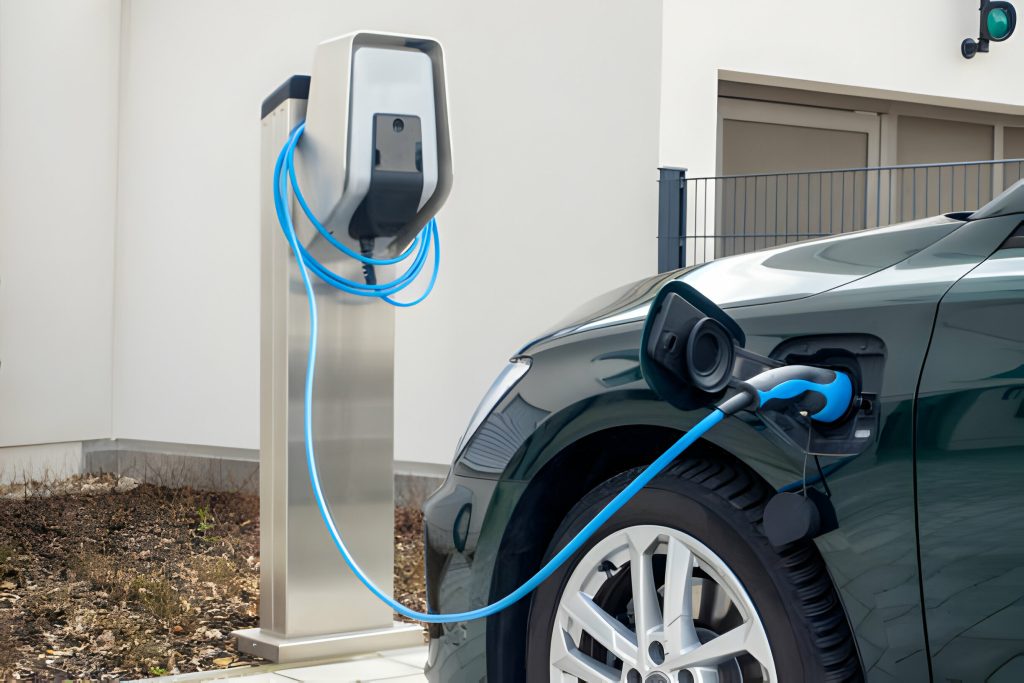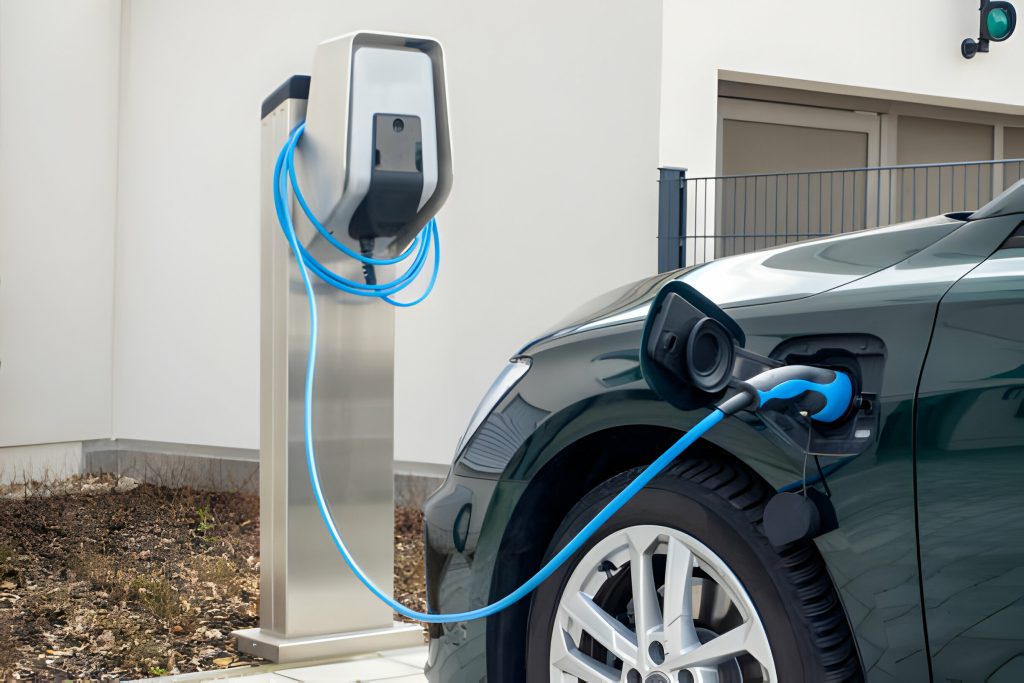The average lifespan of a Tesla battery is around 8 to 10 years, requiring replacement after this period. Tesla battery replacement typically depends on usage, charging habits, and maintenance.
Battery Basics
Tesla’s electric vehicles utilize advanced battery technology, primarily lithium-ion (Li-ion). These batteries power the vehicle by storing and providing electrical energy. Tesla’s battery packs comprise numerous individual cells, and the overall capacity is measured in kilowatt-hours (kWh).
The battery management system optimizes charging and discharging, extending the lifespan. Tesla vehicles also incorporate thermal management systems to regulate battery temperature, enhancing performance and durability.
With advancements in chemistry and engineering, Tesla aims to provide long-lasting batteries, typically 8 to 15 years, depending on usage patterns and environmental conditions. Regular software updates further contribute to optimizing battery efficiency and overall vehicle performance.
The Lifespan Of Tesla Batteries
When it comes to electric vehicles, one of the most important factors to consider is the battery’s lifespan. In the case of Tesla, the brand known for its cutting-edge technology and high-performance electric cars, there is often speculation about how long the batteries will last.
Throughout this piece, we’ll explore the details of the lifespan of Tesla batteries and discuss important factors that can affect their longevity.
Performance Over Time
Tesla batteries have been designed to have a long lifespan, allowing drivers to enjoy optimal performance for years. These batteries are made using lithium-ion cell technology, known for its durability and reliability.
As a result, Tesla owners can expect their batteries to deliver impressive performance throughout their lifespan.
Factors Affecting Longevity
Several factors can affect how long Tesla batteries last. Understanding these factors can help Tesla owners prolong the lifespan of their batteries and make informed decisions regarding battery replacement.
1. Temperature
Temperature plays a crucial role in determining the lifespan of a Tesla battery. Abrupt temperature changes, regardless of the season, can negatively impact batteries’ health.
Keeping Tesla vehicles parked in a moderate temperature range is recommended to ensure the battery’s longevity.
2. Charging Habits
How often and how you charge your Tesla can also impact the battery’s lifespan. It is advisable to avoid frequent fast charging since it may cause the battery to experience more stress and reduce its overall lifespan. Opting for slower, more regular charging sessions is a better practice.
3. Mileage and Usage
The number of miles driven and how a Tesla is used can affect battery longevity. Higher mileage or driving habits that involve constant acceleration and deceleration can put more strain on the battery, potentially shortening its lifespan.
However, it’s important to note that Tesla batteries are designed for daily use and can withstand the demands of regular driving.
4. Battery Management
Tesla vehicles come equipped with sophisticated battery management systems, which optimize performance and protect the battery from wear and tear. Proper battery management, such as avoiding frequent deep discharges and extreme charge levels, can significantly extend the battery’s lifespan.
Tesla owners should follow the recommended charging guidelines provided by the manufacturer to ensure the best possible battery performance.
By taking these things into account and using quality battery maintenance practices, Tesla owners can maximize the lifespan of their batteries and continue to enjoy the benefits of owning an electric vehicle. With Tesla’s dedication to innovation and technology, it’s no wonder their batteries are built to last.
Battery Replacement Frequency
A common question that many potential Tesla owners have is how often they will need to replace the vehicle’s battery. One of the most essential parts of an electric device is the battery vehicle, and its replacement cost can be substantial. This section will explore the typical replacement timeline for Tesla batteries and discuss the importance of battery recycling and sustainability.
Typical Replacement Timeline
One of the advantages of owning a Tesla is the longevity of its battery life. On average, a Tesla battery can last anywhere from 8 to 10 years, depending on various factors such as usage, driving conditions, and battery size.
It’s important to note that the warranty on a Tesla battery typically covers a specific number of years or a certain amount of mileage, whichever happens first. For instance, the Model S and Model X come with an 8-year or 150,000-mile warranty, while the Model 3 has an 8-year or 120,000-mile warranty.
The cost is usually covered if a Tesla battery needs replacement within the warranty period. However, if the battery needs replacement after the expired warranty, it can be expensive, ranging from $5,000 to $20,000, depending on the model.
Nevertheless, it’s worth noting that not all Tesla owners will necessarily need to replace their batteries within this timeframe. Tesla’s batteries are designed to perform optimally for a long time, and their advanced battery management system helps extend their lifespan even further.
Battery Recycling And Sustainability
| Step | Description |
|---|---|
| 1 | Collection and dismantling of old batteries |
| 2 | Transportation to recycling facilities |
| 3 | Disassembly and sorting of battery components |
| 4 | Extraction of valuable materials (e.g., cobalt, lithium, nickel) |
| 5 | Reuse or recycling of remaining battery components |
| 6 | Proper disposal of hazardous materials |
Tesla is committed to sustainability and has developed an extensive battery recycling program. When a Tesla battery reaches the end of its life cycle, it undergoes a recycling process that allows for the extraction of valuable materials from the battery, such as cobalt, lithium, and nickel.
This recycling process involves several steps, including collecting and dismantling old batteries. The batteries are taken to specialized recycling facilities after they are gathered. The batteries are disassembled and sorted into different components at these facilities.
Valuable materials are extracted from the batteries, and any remaining components are reused or recycled. Throughout this process, Tesla ensures the disposal of hazardous materials to minimize environmental impact.
Tesla’s battery recycling efforts not only contribute to sustainability but also help lessen the need for fresh raw resources. Through battery recycling, Tesla can repurpose valuable resources and promote a more circular economy.
Maximizing Battery Lifespan
Electric vehicles like Tesla are revolutionizing the automotive industry, offering sustainability, energy efficiency, and long-term cost benefits. Extending your Tesla’s battery life is vital to ensuring the vehicle’s optimal performance and value retention.
By implementing best practices for maintenance and utilizing battery management systems, you can significantly prolong the life of your Tesla’s battery.
Best Practices For Maintenance
-
- Regularly update your car’s software to ensure efficient battery performance.
-
- Avoid frequent total discharges and keep the battery level at 20% or less and 80%.
-
- Keep your Tesla parked in a shaded or cool area to prevent excessive heat exposure.
Implementing these practices can help prevent premature aging and Degradation of your Tesla’s battery, increasing its longevity.
Utilizing Battery Management Systems
`Tesla vehicles are equipped with advanced Battery Management Systems (BMS) that monitor and regulate the battery’s performance.
The BMS ensures that each cell in the battery pack operates within optimal parameters, preventing overcharging, over-discharging, and cell imbalances that can shorten the battery’s lifespan. Trusting the BMS to manage the battery effectively can significantly prolong its durability.

Cost Considerations
When considering the purchase of an electric vehicle like a Tesla, it’s essential to consider the cost considerations associated with its battery. The battery is essential as it powers the vehicle, providing the mileage range and overall performance.
While Tesla batteries are known for their longevity and durability, there may come a time when you need to replace them. This section will explore the cost considerations of replacing a Tesla battery.
Upfront Costs Vs. Long-term Savings
One of the primary concerns when replacing a Tesla battery is the initial cost. The initial cost of electric automobiles is typically higher than gasoline-powered vehicles.
, it’s essential to consider the long-term savings a Tesla battery can offer.
While the price to repair a Tesla battery can differ based on the model and size of the battery, it is generally considered a significant investment. However, it’s crucial to note that the long-term savings of owning an electric vehicle can offset this initial expense.
Unlike traditional internal combustion engines, electric vehicles like Tesla have fewer moving parts and require less maintenance. This means fewer visits to the mechanic and, ultimately, lower maintenance costs. Additionally, the electricity used to charge the vehicle is typically cheaper than fossil fuel prices.
Moreover, Tesla often releases software updates that can enhance battery life and performance, further extending its longevity. These updates are often free and can be downloaded remotely, saving you on potential battery replacement costs.
Warranty Coverage And Options
Tesla offers warranty coverage for its batteries, providing some peace of mind for owners. The warranty periods may vary depending on the model and age of the vehicle. It’s recommended to check the specific details for your particular Tesla model.
The warranty coverage typically includes protection against battery defects and excessive loss of capacity. Tesla’s warranties are designed to ensure that in case of any issues arising with the battery within the warranty period, Tesla will cover the cost of replacement or repair.
Furthermore, Tesla provides additional options for extended warranties, allowing you to protect your investment further. These extended warranties offer continued coverage after the initial warranty expires, providing added security and potential cost savings in case of battery-related issues.
How Long Will A Tesla Battery Last?
A Tesla battery is designed to be durable and can typically last between 8 to 15 years, depending on various factors. Usage patterns, charging habits, and environmental conditions influence the battery’s longevity.
With advancements in battery technology and continuous improvements by Tesla, the company aims to extend the lifespan of its batteries. Regular software updates and ongoing research contribute to optimizing performance and addressing potential concerns.
While individual experiences may vary, Tesla’s commitment to battery longevity reflects the company’s focus on delivering sustainable and reliable electric vehicles for an extended period.
Future Innovations
Future Innovations in battery technology hold immense promise for Tesla owners when replacing their car batteries. As the world continues to embrace sustainable and greener transportation alternatives, advancements in battery technology are crucial.
These innovations enhance the performance and longevity of Tesla batteries and provide a more seamless and affordable experience for their owners.
Advancements In Battery Technology
Advancements in battery technology are revolutionizing the automotive industry, particularly in electric vehicles. For Tesla owners, these advancements translate into a future where battery replacements become less frequent.
Research and development goals have recently been to enhance battery chemistry, introduce more efficient materials, and expand charging infrastructure. These developments and Tesla’s commitment to innovation pave the way for longer-lasting and more reliable batteries.
- Improvements in battery chemistry lead to enhanced energy density, empowering Tesla cars to go even further on a single charge.
- Using more efficient materials, such as solid-state electrolytes or silicon anodes, boosts battery performance, increasing range and overall lifespan.
- Advancements in charging infrastructure, including faster and widespread Supercharger networks, reduce the strain on batteries, prolonging their lifespan.
Implications For Tesla Owners
Tesla owners stand to benefit significantly from these future battery innovations. The implications include:
- Reduced battery replacement frequency leads to overall cost savings for Tesla owners.
- Extended range capabilities, allowing for longer trips without the need for frequent recharging.
- They have increased reliability and peace of mind, as the advancements in battery technology minimize the risk of unexpected battery failure.
With each advancement in battery technology, Tesla owners can expect a positive impact on their driving experience. As battery longevity improves and the need for replacements becomes less frequent, the overall ownership cost decreases, making Tesla cars an even more economically viable choice.
| Advancement | Implication |
|---|---|
| Improved battery chemistry | Extended range and enhanced energy density |
| Efficient materials | Increased battery performance and lifespan |
| Expanded charging infrastructure | Reduced strain on batteries, longer lifespan |

How Long Does A Tesla Battery Last
A Tesla battery’s lifespan depends on several variables, including usage trends, behaviors regarding charging, and external factors. Generally, Tesla batteries are designed to last for a long time, and the company provides a warranty that covers a certain number of years or miles, whichever comes first.
As of my last knowledge update in January 2022, Tesla offers different vehicle warranty periods, but the battery warranty for most Tesla vehicles is typically around 8 years or more. Additionally, Tesla’s warranties often come with a specified number of miles, such as 100,000 or more.
It’s important to note that the Degradation of batteries is a normal process; over time, the battery’s capacity may decrease. However, Tesla’s battery management system is designed to optimize performance and extend the battery’s life.
For the most accurate and up-to-date information, it’s recommended to check Tesla’s official documentation or contact Tesla directly, as warranty terms and battery technologies may have evolved since my last update in January 2022.

Frequently Asked Questions Of How Often Do You Have To Replace A Tesla Battery
How Often Do Tesla Batteries Need To Be Replaced?
Tesla batteries are made with extended lifespans in mind. A Tesla battery typically lasts between 8 and 15 years or around 500,000 to 1 million miles. The lifespan depends on driving habits, climate conditions, and battery maintenance.
Can You Replace A Tesla Battery Yourself?
No, Tesla does not currently offer owners a DIY battery replacement option. Replacing a Tesla battery is complex and requires specialized knowledge and equipment. If your Tesla battery needs replacement, it is recommended that you contact Tesla’s authorized service centers for professional assistance.
How Much Does It Cost To Replace A Tesla Battery?
Depending on the model, changing a Tesla battery can cost different amounts and battery sizes. It can range from $5,000 to $20,000 or more on average. But it’s crucial to remember that Tesla’s battery warranty covers defects and certain issues for a specific period, which can help reduce or eliminate the replacement cost.
What Factors Affect The Lifespan Of A Tesla Battery?
Several factors can influence the lifespan of a Tesla battery. These include temperature extremes, frequency of fast charging, driving habits, and battery maintenance. Extreme cold or hot weather can accelerate battery degradation, while frequent fast charging can also impact the overall longevity of the battery.
Regular software updates from Tesla can help optimize battery performance and improve lifespan.
How Many Years Do Tesla Batteries Last?
Tesla batteries are designed to last 8 to 15 years, depending on usage, climate conditions, and specific models.
Does Tesla Replace Batteries For Free?
Tesla typically does not replace batteries for free once the warranty period expires. Battery replacements may be available for purchase, and Tesla occasionally offers battery upgrade programs. It’s advisable to check Tesla’s official policies and contact customer service for specific battery replacement costs and information on options.
Can A Tesla Battery Last 10 Years?
Yes, Tesla batteries are designed to last for around 8 to 15 years, and it is feasible for a Tesla battery to last 10 years or more, depending on factors such as usage, charging habits, and environmental conditions. Regular software updates and improvements may also contribute to the longevity of Tesla batteries.
Conclusion
A Tesla battery’s lifespan depends on several things, including use and maintenance. You can extend its longevity by following recommended charging practices and caring for your battery. It is essential to stay informed about technology advancements and options for battery replacement to make informed decisions for your electric vehicle.

I am Nishadujjaman.I have two years of experience all types of battery like tesla battery,car battery etc. So I work on solving these issues and give various tips on these issues.
